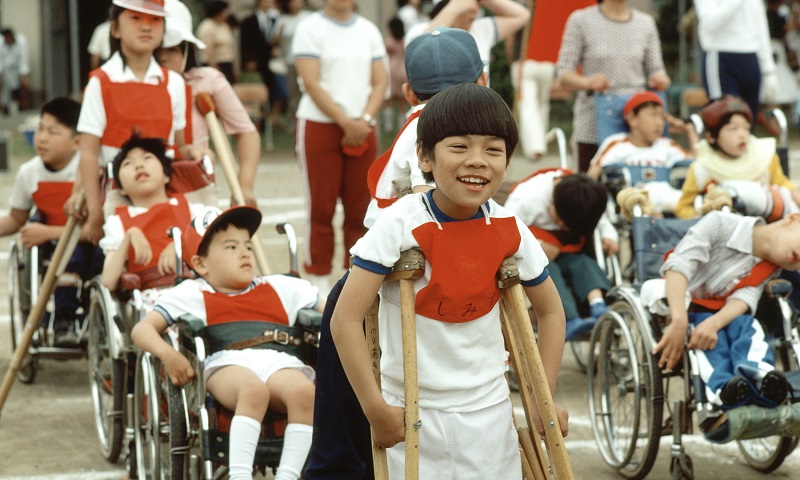
- Estimates suggest that there are between 180 and 220 million youth with disabilities worldwide and nearly 80% of them live in developing countries.[1]
- The unemployment rate of persons with disabilities is over 80% in some countries across continents.[2]
- Youth with disabilities face dual disadvantages as individuals with disabilities are more likely to live in poverty even in developed countries such as the United States.[3]
- Children with disabilities have lower probability of entering school as well as staying and advancing in school as children without disabilities.[4]
Youth with disabilities often face marginalization and severe social, economic, and civic disparities as compared with those without disabilities due to a range of factors from stigma to inaccessible environments. As countries look towards the post-2015 era to ensure poverty reduction and equitable development, it is essential to ensure that all youth have equal opportunities to become productive and contributing members of their society and enjoy all rights and privileges of citizenship, including youth with disabilities.
It is important to understand the life cycle of disability-based marginalization that impacts persons with disabilities in their youth. Youth with disabilities are impacted by their experiences as they transition from childhood into adulthood and similarly spillover into the remainder of their adult lives. For many young people with disabilities, exclusion, isolation, and abuse, as well as lack of educational and economic opportunities are daily experiences. Disparities in education, employment, and relationships are more pronounced in youth with disabilities. Like adults with disabilities, youth with disabilities do not enjoy the same human rights or equal access to goods and services as peers without disabilities. Children with disabilities may lack opportunities to receive an education due to inaccessible school systems, which will in turn impact their vocational skills and ability to accumulate capital and social assets as adults. Without equal opportunities to get and retain employment and economic self-sufficiency, youth with disabilities will have to be highly dependent on other household members or Government welfare which negatively impacts household assets and in turn a country’s economy.
Youth with disabilities also face severe challenges in exercising their basic rights and for most, full societal acceptance is often out of reach. Youth with disabilities face political and civic disenfranchisement and may experience barriers in youth-driven or youth-focused political and civic participation activities due to the inaccessibility of physical and virtual environments.
The Convention on the Rights of Persons with Disabilities (CRPD) recognizes the importance of ensuring that all persons with disabilities, irrespective of age, enjoy the same human rights as everyone else and provides a framework for legal, civic, and socioeconomic empowerment. Effective implementation of the Convention requires a focused effort by all sectors to guarantee that young people with disabilities participate in mainstreamed as well as in disability specific programs on an equal basis with others.
Download the full Issue Brief on Youth with Disabilities.
[1] Groce, N.E. (2003). HIV/AIDS and people with disability. The Lancet, 361(9367), 1401-1402.
Roggero, P., Tarricone, R., Nicoli, M., & Mangiaterra, V. (2005). Employment & Youth with Disabilities: Sharing Knowledge and Practices. Washington, D.C.: World Bank.
[2] International Labour Organization. (2002). Information Note. ILO/Japan Technical Consultation Meeting on Vocational Training and Employment of People with Disabilities in Asia and the Pacific. 14-16 January 2003. Bangkok. Available at: http://www.ilo.org/public/english/region/asro/bangkok/ability/
Mitra, S., Posarac, A., & Vick, B. (2013). Disability and poverty in developing countries: a multidimensional study. World Development, 41, 1-18.
[3] U.S. Census Bureau, 2008 https://www.census.gov/newsroom/releases/archives/facts_for_features_special_editions/cb08-ff11.html
[4] World Health Organization and World Bank, World Report on Disability 29 (2011), available at http://www.who.int/disabilities/world_report/2011/report/en/
 Welcome to the United Nations
Welcome to the United Nations